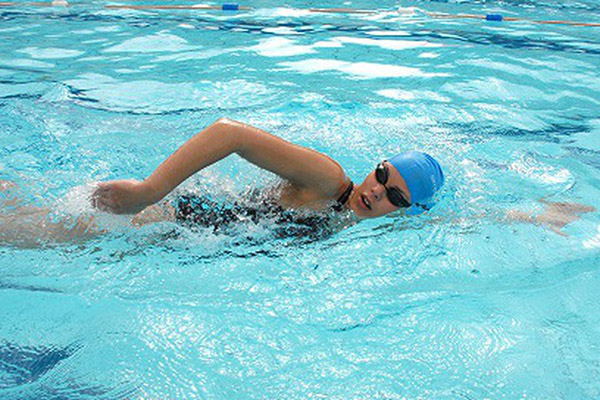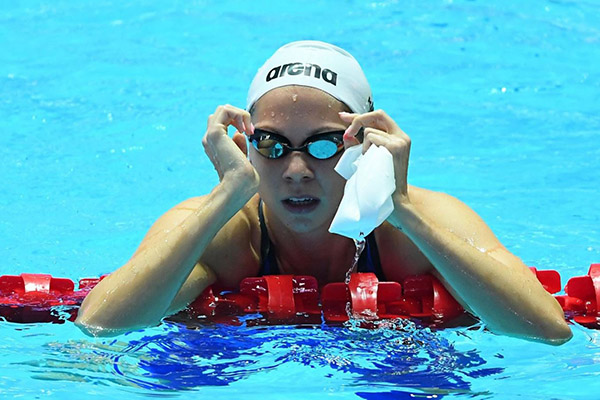Swimming has long been hailed as a key activity for boosting height, sparking ongoing debates regarding its efficacy. Beyond simply starting young, questions persist about the optimal age to begin swimming and how frequently one should hit the pool. Let’s explore the relationship between swimming and height with a fresh perspective.
Engaging in swimming involves a series of movements that elongate and stretch the body, particularly around the epiphyseal plates nestled between bones. These plates facilitate bone growth, which can ultimately contribute to increased height. However, it’s crucial to recognize that these growth plates typically cease their height-enhancing function around the age of 18, highlighting the importance of introducing children to swimming early to maximize its potential benefits.
But what if you’ve already passed adolescence? It’s not time to abandon swimming altogether. Even beyond the teenage years, swimming can still play a vital role in improving posture and spinal alignment, allowing you to reach your maximum genetic height potential. By improving posture, swimming can create the illusion of height, particularly for those who may appear shorter than they are. However, it’s essential to understand that swimming alone cannot miraculously add inches to your height. Rather, it’s part of a broader, active lifestyle conducive to optimal height.
What distinguishes swimming from other activities is its unique interaction with gravity. The perpendicular movement against Earth’s gravity significantly reduces pressure on spinal discs and joints, making swimming an excellent choice for enhancing posture and overall height. Whether you’re a child or an adult, swimming can be a valuable ally in your journey to stand tall and confident.
Types of swimming style and stroke
All over the world, there are countless swimming styles and strokes, and many of them you may have never encountered, such as sidestroke, combat side stroke, trudgen, and so on. In this article, let’s go through the most common four that everyone should know and how they affect your body.

Freestyle/Front Crawl
The freestyle/front crawl, often the first image that comes to mind when thinking about swimming, is a style that demands both your arms and legs to continually paddle to propel you forward. This elegant technique not only ensures your body remains buoyant but also minimizes resistance against the water. With consistent practice of the freestyle/front crawl, you’ll notice an intriguing effect: the gaps between the growth plates within your leg bones and spine gradually widen, contributing to a slight increase in your overall height.
Backstroke
The backstroke is akin to the freestyle/front crawl in many ways, but with one key difference – your body faces upward. Despite this change in orientation, similar movements yield comparable results. As you master the backstroke, the epiphyseal plates between your bones, cartilage, and spinal discs gently stretch. This increased flexibility in your bone structure provides more room for potential growth.
Breaststroke
The breaststroke is a favorite among beginners due to its straightforward technique. Like other swimming styles, the breaststroke requires synchronized movements of the arms and legs, resulting in extended joint flexibility. If you’re new to swimming and wish to test the hypothesis that it can aid in height increase, the breaststroke serves as an excellent starting point.
Butterfly
The butterfly style represents the pinnacle of swimming techniques, demanding a flexible spinal cord and powerful arm strokes to propel you forward while keeping your legs tightly together to execute dolphin kicks. Unlike the other strokes, the majority of the effort is concentrated on your arms, spine, and abdomen. Consequently, you may experience noticeable straightening in your spine rather than significant changes in leg length, setting the butterfly stroke apart from the other swimming styles.
When is the Right Time to Begin Swimming?
Swimming isn’t just a sport; it’s a crucial survival skill. Cultivating this skill from a young age is of utmost importance. Babies possess a natural ability to stay afloat from birth, but it’s advisable to introduce them to the pool at around two months old since their bodies struggle to regulate temperature like adults.
Instilling the habit of swimming before reaching adolescence, coupled with a wholesome lifestyle, can have a profound impact on one’s physical development. While swimming alone may not guarantee an increase in height at any age, when combined with a balanced nutritional diet, this lifestyle can foster the creation of a robust and fully developed physique.

Other benefits of swimming
As previously highlighted, swimming offers a multitude of benefits that extend beyond the obvious. In today’s sedentary world, where people spend hours sitting, whether at school or work, swimming emerges as a fantastic entry point into the world of physical activity, particularly for those seeking to improve their posture.
Another noteworthy physical advantage of swimming lies in its ability to strengthen the cardiovascular system. While in the water, your lung and heart muscles engage vigorously to ensure a consistent supply of oxygen throughout your body. This process not only enhances their functionality but also resembles the way your arms and legs are exercised during swimming.
Similar to many other sports, swimming triggers the release of neurotransmitters such as endorphins, endocannabinoids, and dopamine. Endorphins not only act as natural pain relievers during your swimming sessions but also induce a pleasurable sensation. Furthermore, the release of endocannabinoids brings about a soothing euphoria after intense exertion, promoting relaxation of both the mind and body. Lastly, dopamine plays a crucial role in regulating emotions, sleep patterns, mood, heart rate, and memory. These chemical reactions offer a cascade of positive effects, influencing your physical responses, capacity for learning, and self-confidence.
In conclusion,
It’s important to recognize that achieving an increase in height is not solely reliant on engaging in activities like swimming, or any other sport for that matter. Rather, it is the result of a multifaceted approach that encompasses various elements. While swimming can certainly contribute to your overall growth, it should be seen as just one piece of the puzzle.
In addition to staying active through swimming or other physical activities, maintaining a well-balanced diet rich in diverse nutrients is crucial. This diet acts as the foundation upon which your body can build and repair itself. However, even with the right nutrition, another vital component is required: quality sleep.
Sleep is the unsung hero of our growth journey. It serves as the dedicated worker that helps rebuild and rejuvenate our bodies. During the night, our brains and bodies produce growth hormones, with the peak production occurring between 10 pm and 1 am. This underscores the significance of ensuring that children get sufficient, restful sleep, ideally at least 9 hours each night. Early bedtime for kids becomes all the more critical in light of this information.
In essence, achieving a healthy and tall stature involves a holistic approach. It’s a combination of maintaining a balanced diet, prioritizing restful sleep, and leading an active lifestyle. This journey towards attaining a taller physique is not a quick fix; rather, it’s a gradual accumulation of discipline, especially when started at a young age. So, remember that growth is a process, and by incorporating these elements into your lifestyle, you’re setting the stage for a healthier and taller future.
- Related post: How To Get Taller At 12?

Mike Nikko is a blogger with over 15 years of experience. I will bring you the best product reviews and other useful life experiences, tips to increase height, tips to improve health… If you have any questions, feel free to ask Mike Nikko!